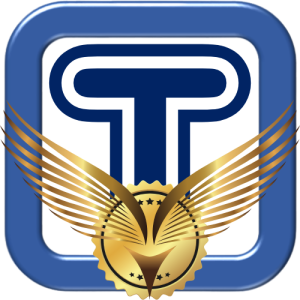In the era of rapid technological advancement, the convergence of the Internet of Things (IoT) and industrial operations has ignited a revolution in the way industries operate, transforming traditional factories and supply chains into interconnected, data-driven ecosystems. This article explores the pivotal role of IoT in propelling industrial digital transformation, shedding light on its benefits, challenges, and the profound impact it has on redefining industrial landscapes.
IoT The Catalyst for Industrial Digital Transformation
The emergence of IoT as a core component of industrial digital transformation signifies a paradigm shift in how industries harness data, connectivity, and automation to revolutionize their operations and create new business models. IoT transforms traditional industries into innovative ecosystems that operate intelligently, efficiently, and adaptively by connecting devices, machines, sensors, and processes. Industrial digital transformation powered by IoT is reshaping manufacturing, logistics, energy, and other sectors, driving efficiency, innovation, and competitiveness to unprecedented levels.
The Benefits of IoT in Industrial Digital Transformation
The incorporation of IoT into industrial operations goes beyond mere technological integration, offering a plethora of strategic advantages that redefine the way industry’s function and interact with their environment.
Predictive Maintenance
IoT-enabled sensors and devices collect real-time data from industrial equipment. This data is analyzed to predict maintenance needs, allowing organizations to perform maintenance activities before equipment failure occurs. This proactive approach minimizes downtime, reduces maintenance costs, and extends the lifespan of assets.
Optimized Supply Chain Management
IoT provides end-to-end visibility into the supply chain, tracking the movement of goods, materials, and products. This real-time monitoring enhances inventory management, demand forecasting, and logistics optimization, leading to reduced lead times, cost savings, and improved customer satisfaction.
Enhanced Operational Efficiency
IoT enables real-time monitoring and control of industrial processes. Organizations can gather production, energy consumption, and resource utilization data, facilitating process optimization and efficiency improvements. Smart factories leverage IoT to automate tasks, reduce waste, and achieve higher production output.
Data-Driven Decision-Making
IoT generates vast amounts of data that can be analyzed to extract actionable insights. Organizations can make informed decisions based on real-time and historical data, leading to better strategic planning, performance optimization, and rapid adaptation to changing market conditions.
Safety and Compliance
IoT sensors can monitor workplace conditions, equipment performance, and employee safety. Organizations can ensure compliance with safety regulations, identify potential hazards, and mitigate risks in real time. This promotes a safer working environment and minimizes the likelihood of accidents.
Challenges and Considerations
While IoT promises transformative benefits, integrating it into industrial processes for digital transformation comes with challenges.
Data Security and Privacy
Connected devices and sensors increase the attack surface for cyber threats. Industrial IoT solutions must prioritize robust cybersecurity measures to protect sensitive data, prevent unauthorized access, and safeguard intellectual property.
Interoperability
Industrial environments often comprise diverse legacy systems and equipment from different vendors. Ensuring compatibility and seamless integration between these systems and IoT devices requires careful planning and standardization.
Data Overload
IoT generates vast volumes of data, leading to data storage, processing, and analysis challenges. Organizations must invest in scalable data infrastructure and advanced analytics capabilities to derive meaningful insights from this data deluge.
Maintenance and Upgrades
Managing a network of IoT devices necessitates continuous maintenance and software updates. Organizations must establish efficient processes to ensure that devices remain secure, updated, and compatible with evolving technologies.
Driving Industrial Digital Transformation with IoT
To harness IoT’s power for industrial digital transformation, organizations should adopt a strategic approach.
Identify Key Use Cases
Begin by identifying specific use cases where IoT can drive significant value, such as predictive maintenance, quality control, or energy management. Focus on use cases that align with strategic goals and provide tangible benefits.
Data Strategy
Develop a comprehensive data strategy to manage the influx of IoT-generated data. This includes data collection, storage, processing, and analysis. Prioritize data quality and establish protocols for data governance.
Integration with Existing Systems
Ensure that IoT solutions seamlessly integrate with existing IT and operational technology (OT) systems. Interoperability is essential to create a cohesive ecosystem leveraging legacy and modern technologies.
Invest in Talent
IoT implementation requires specialized skills in areas such as data analytics, cybersecurity, and software development. Invest in training and hiring talent with expertise in IoT technologies and their applications.
Conclusion
IoT is ushering in a new era of industrial digital transformation, reshaping industries by connecting physical and digital worlds in unprecedented ways. Its ability to drive predictive insights, optimize operations, and enhance decision-making propels industries toward efficiency, innovation, and competitiveness. While challenges like security and data management exist, the potential rewards of IoT integration into industrial processes are profound.
By adopting a strategic approach and embracing the transformative power of IoT, industries can pave the way for sustainable growth, adaptability, and success in an increasingly interconnected and data-driven world. Through IoT-driven industrial digital transformation, organizations embark on a journey towards improved efficiency, optimized resource utilization, and strategic relevance in the rapidly evolving industrial landscape.



